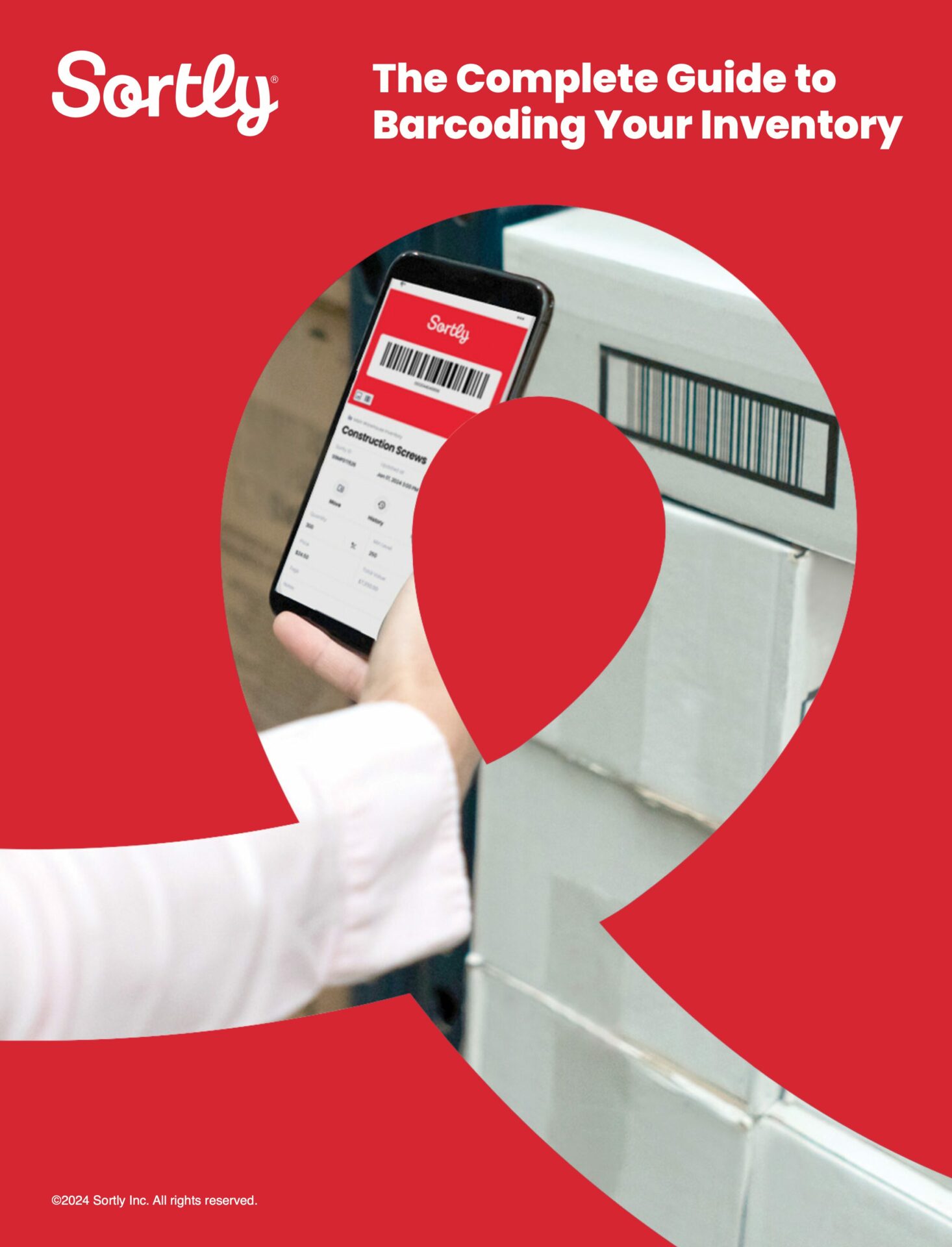When it comes to inventory management, a handful of mistakes can really set back your strategy. These inventory mistakes are common, and virtually every business is guilty of committing at least a couple of them once or twice. Still, avoiding them is possible—and can help your business run more profitably and productively.
This article will touch on the eight most common inventory mistakes and how to prevent them.
1. Lack of organization
The greatest inventory management strategy in the world is going to fall short if an organization cannot keep its stockrooms and storage areas organized. Whether your business maintains only a few closets worth of inventory or manages tens of thousands of items across multiple locations, there is no shortcut when it comes to physically organizing inventory.
When storage areas, stockrooms, and warehouses grow disorganized, it becomes much more difficult for employees to take inventory, verify inventory levels, locate the inventory they need in a timely fashion, and confidently place orders for additional inventory. As a result, employees are much more likely to over-order inventory they already have on hand while existing stock expires or becomes obsolete out of sight.
To combat this inventory mistake, dedicate a few days, hours, or even weeks to thoroughly organizing all inventory and optimizing how inventory is physically stored across all storage areas. This is also the perfect time to update your inventory list, consider upgrading your inventory system, and even implement a barcode or QR code system.
2. Relying on a single employee for inventory information
Sometimes, an organization relies on a single person to carry the mental load of inventory management. This is most frequently seen in small businesses. While there is nothing inherently wrong with having a single employee handle all things inventory, operations become that more challenging when that person becomes unreachable due to illness, vacation, or simply clocking out.
Plus, over time, if an optimized inventory management strategy is not decided upon, this point person may end up storing information about inventory, vendors, and asset maintenance in their minds instead of on a sheet of paper, on a spreadsheet, or within an inventory management system.
To avoid the fallout of over-reliance on a single person, consider a collaborative inventory management system that offers around-the-clock access to other stakeholders. Allowing that point person to continue to “own” inventory is entirely okay. Still, for best results, it’s also essential to ensure somebody else in the business has been trained and that several stakeholders know how to access inventory information at any time.
Another best practice would be to craft a standard operating procedure for inventory management that could be quickly reviewed by a new hire or even a substitute point person, should the original point person leave their job or even catch a cold.
3. Selecting an inventory system that doesn’t match a business’s needs
Every business is different, so it’s no surprise that most inventory management strategies are different, too. This is precisely why companies must find an inventory management system that aligns with their unique wants, needs, and constraints.
A business that stocks tens of thousands of items cannot rely on a manual inventory system to keep track of its inventory. On the other hand, a small business that only stocks a few dozen products might not want to invest in inventory management software.
Fortunately, inventory management software is now more affordable and intuitive than ever. Smaller businesses can usually get a free or relatively inexpensive subscription to powerful and feature-rich inventory software, and should the business grow in the future, the company can immediately upgrade that subscription to unlock more features.

4. Jumbling numbers and committing other data entry errors
To err is human, and there is nothing wrong with that. But when it comes to inventory management, little mistakes can add up to costly stockouts and shortages (and just as costly overstocking, too). This is one of the chief reasons inventory spreadsheets are not always the best option for businesses, even if the spreadsheet does a fine job of “recording” inventory records.
After all, those cells are small, and it’s easy to accidentally jumble numbers when transposing data from a sheet of paper to a spreadsheet. To avoid data entry errors, businesses can either double or triple-check their spreadsheet work or consider inventory management software that offers easy, mobile barcode and QR code scanning.

Free Ebook: The Complete Guide to Barcoding Your Inventory
This easy, comprehensive guide will help you:
- Implement a barcode inventory system for your business
- Generate your own unique barcodes
- Practice perpetual inventory control with barcoding
5. Confusing items that look and sound alike
It’s more than just data entry errors that can cause major confusion during inventory management. Many items look and sound alike, which can cause problems when updating inventory records and inventorying the items themselves.
To avoid such mistakes, consider trying out inventory management software that features high-resolution images in every item profile and enables barcode and QR code scanning. When you scan a barcode or QR code, it’s impossible to pull up the wrong item—the codes are simply too unique to allow it. For peace of mind, you can also reference those high-resolution images of the inventoried item that are tethered to the item’s profile.
6. Over-ordering due to a lack of confidence
We already mentioned that a disorganized stockroom is one of the chief causes of overstocking, a bad habit that can turn valuable inventory into expired and unsellable dead stock.
But it’s more than disorganization that can lead to thoughtless over-ordering. The larger a business and the more scattered its inventory management strategy, the more likely team members will place inflated inventory orders to account for disorganization or poor communication with other team members.
The best way to combat the lack of confidence that leads to over-ordering is with knowledge. Determine exactly how much inventory you need to order and at what frequency so you can practice top-notch inventory control.
Calculating essential formulas such as safety stock, lead time, and minimum order quantity can help combat this mistake. If that lack of confidence stems from challenges with your vendors, either communicate with them about your concerns until they are remedied or search for new suppliers you trust.
7. Stockouts and shortages due to poor demand forecasting
Demand forecasting only works when a business correctly handles previous inventory needs. If inventory records aren’t kept properly, it’s virtually impossible to glean the knowledge required to make confident estimates about how much stock the organization will need down the line.
Often, this lack of confidence is overcompensated by overordering inventory. But that’s not always the case. In fact, poor demand forecasting and improperly maintaining inventory records can also lead to severe underordering. While overordering comes with its own risks, underordering has consequences that are just as severe, if not more severe.
This is chiefly because when a business underorders inventory, it won’t be able to meet customer demand swiftly. When a business can’t meet customer demand, it either wreaks havoc on its partners’ supply chains or disappoints its loyal customers, who may then decide to shop with a competitor instead.
To combat this risk, start at the very beginning: with an organized stockroom and a rock-solid inventory management strategy that your team can maintain day in and day out period. From there, it’ll be that much easier to maintain accurate inventory records that inform solid demand forecasting.
8. Scrambling to purchase or locate inventory last minute
Virtually every business has experienced an inventory stockout at some point. What happens next is unique to each business. Some will be forced to shutter until inventory levels return to normal. Other companies will continue to operate, but less productively or profitably. And other businesses will be forced to purchase these items locally at higher prices to keep their businesses running.
A similar issue also happens when inventory is not in the right place at the right time. Most often seen when inventory is shared across multiple locations, such as in the construction industry, poor inventory utilization can cause severe delays as customers and projects wait for team members to drive around searching for the equipment and inventory that should have been on site.
To combat these issues, it’s worth considering an inventory management strategy that enables your team to know precisely what is in stock at any time, even across multiple locations. Many businesses use inventory management software with barcode and QR code scanning to check inventory in and out as it moves from location to location. This allows stakeholders to determine where the inventory they need later is at any given time and to make plans to transfer that inventory to the correct location before it causes costly delays and customer dissatisfaction.
About Sortly

Sortly helps you track, manage, and organize all your inventory—from any device, in any location. We’re an easy-to-use inventory solution that’s perfect for small businesses. Sortly builds inventory tracking seamlessly into your workday so you can save time and money, satisfy your customers, and help your business succeed.
With Sortly, you can track consumable inventory like supplies, parts, and raw materials, assets like equipment and machinery, and anything else that matters to your business. It comes equipped with smart features like barcoding & QR coding, low stock alerts, customizable inventory folders, smart reporting, and much more. Best of all, you can update inventory right from your smartphone—and so can your team.
Whether you’re just getting started with inventory management or you’re an expert looking for a more efficient solution, we can transform how your company manages inventory—so you can focus on building your small business. That’s why over 15,000 businesses globally trust us as their inventory management solution.
Start your two-week free trial of Sortly today.




